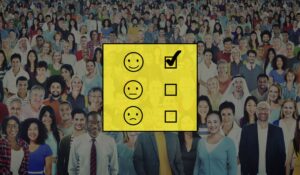2022 is going to be the year of great changes that will form the basis of all future work culture norms. 3 primary employee engagement trends stick out and will influence policies, decision-making, and strategy for this year.
Historically speaking, major changes in work culture were a subsequent effect of major historical breakthroughs outside the workplace. For example, the suffrage movement in the 1920s led to a huge uprising of female independence. While the movement was focused on the female right to vote, it is symbolic of the woman’s strength, independence, and equal right in society. As a result, a larger percentage of married women were entering the workforce. The feminist movement in the 60s saw a major increase of single women going to university, getting degrees, and entering the workforce. The BLM movement led to organizations taking the necessary steps to be intolerant towards racial bias, more sensitive towards the difference in cultures, and the positive values they bring to the table.
While the COVID’-19 pandemic may not be a movement, it is historical. Most people of our generation had never even heard of a lockdown. We’d never seen empty streets or stores running out of supplies. We’d never thought it was possible to stay at home all day long. Work from home was an alien concept. The pandemic made this alien concept a mainstream one. Two years on, we as employees and we as employers have come to realize that it is possible for the wheels to keep on moving. Organizations now understand that certain policies that they thought necessary in the past no longer hold true. The employee psyche has changed so much, they need to change their approach in order to maintain efficiency, productivity, and longevity.
There are 3 primary areas that must be addressed by every organization when it comes to engagement – Communicating with your employees. Understanding your employees. And appreciating your employees. Once these three are embraced, all relating areas of issues will be resolved.
Trend #1: Hybrid Communications
Let’s face it, you don’t have to be in the office to get the job done. You just have to be able to communicate. Communicate effectively and efficiently. When we say communicate we mean to make sure you have the right employee apps to ensure the messaging goes through clearly and effectively. Gone are the days of holding meetings to communicate information. Organizations are now creating recordings, short informative videos that give you all the necessary information in detail and explain what the requirements are. This cuts down the requirement to coordinate schedules. This way employees can go back to the video if they have any questions which will also reduce the number of follow-up meetings which tend to waste time. This will lead to more time being spent actually getting the job done. Increased productivity and efficiency.
Trend #2: People-First Culture
Over the last decade, we have seen organizations grow and learn to be more inclusive and diversity-driven. This decade is going to be the premiere decade for people-first culture. Companies are now battling having to lose valuable employees and talent if they do not adopt a culture-driven approach to running their organization. Diversity is one thing, but employees can only truly feel cared for when they and their opinions are valued on an individual level. Employee surveys will be at the forefront of understanding those opinions. Gone are the days of asking employees single format multiple-choice questions. Companies are investing in employee communications platforms to conduct multi-format surveys on every single aspect of their company. The more you know about your people the stronger you can build the bond between employee and employer. Increased engagement and retention.
Trend #3: Appreciate Individual Talent
2022 will see the greatest adaption of rewards and recognition programs the world over. This also includes manufacturing, construction, and other companies dealing with blue and grey collared workers. Instead of having a fixed model or recognitions to choose from, organizations are now personalizing recognition more and more based on individuality. In keeping with the attempt to embrace diversity in all its glory, diversity in not only race, diversity in the job description, skill, department, and day-to-day interactions. These are all things taken into consideration when developing a recognition program. One of the best ways to feel valued is if you are appreciated beyond “Great job”. Employee recognition platforms are being used to improve the ease of recognizing individuals, not only top-down but also bottom-up and peer-to-peer. The more your people motivate each other, the more positivity you build within the work culture. Increased, motivation, engagement, efficiency, creativity, and retention.
According to Darwin, “It is not the strongest of the species that survives, nor the most intelligent. It is the one most adaptable to change”. Adapting to the changing lifestyle, psyche, and needs of your employees is not only a surety of survival but also success.













